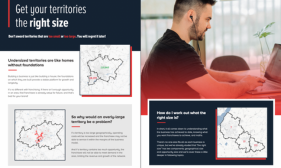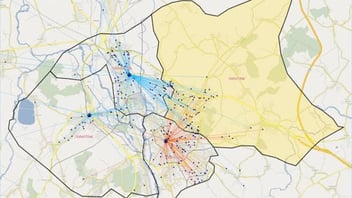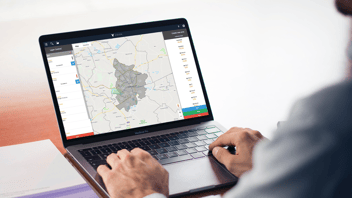May 14, 2013
This year at Atlas Mapping has seen an increase in the number of franchisors wanting to discuss the issue of passive sales being generated in the franchise network. This piece aims to provide our expertise on the topic and is the first in a series of short articles that will cover ways in which a modern franchise is able to keep on top of passive sales through mapping and technology.
Firstly, what are passive sales in the context of franchise territories? These are sales in which a customer has approached a franchisee but the customer is not located within the territory border as defined in the franchisee’s agreement. As a franchisor, you are not able to restrict a franchisee from servicing a customer that has approached that franchisee. As franchisees and the franchise network matures then the likelihood of passive sales increases.
In an established franchise network, it is likely that passive sales are generated across many of the territory borders. The volume of these sales is dependent on a number of factors. From the perspective of territory mapping professionals, one of the root causes of this is the territory design implemented across the network (this will be explained in more detail in a later article in this series). But what are the potential problems that could arise due to passive sales?
Opportunity captured in neighbouring territories.
This is where a franchisee has operated a territory and gained a significant number of passive sales in an un-awarded territory that neighbours them. When it comes to sell the neighbouring territory the new franchisee will find that a large proportion of their potential customers are in fact existing customers of the neighbouring franchisee.
- For some franchise models, this is great, as the brand awareness is already established even though the territory sold is a ‘virgin’ territory.
- For others, however, it can prove troublesome where the customer to franchisee relationship is very strong and the customers may not be so willing to switch across to the new franchisee.
- There is also a potential impact on the existing franchisees business. If those customers are happy to switch the new franchisee relatively quickly, then what impact will this have on the existing franchisee’s revenue.
Ambiguity of territory performance.
If passive sales are not monitored then it will be unknown to the franchisor how much revenue is actually being generated from the territory as defined in the franchisee agreement. There are various points that could be drawn from this depending on each individual franchise. One such common example would be the revenue targets that a franchisee is benchmarked against, a territory could be easily meeting expectation but in actual fact could have a large percentage of revenue generated from outside of the territory.
Missed opportunity.
If a franchisee has captured a relatively high percentage of their customer base from outside of their territory then there is a chance parts of the territory awarded to them are not being utilised.
Needless to say, the topic of passive sales is a large one and is the reason it will be covered over multiple posts. The articles to follow on from this one will provide detailed information on how mapping and modern technologies can help you to manage the impact of passive sales. If there are any specific topics you would like covered please feel free to drop us an email, post us a LinkedIn message or Tweet us @atlasmapping.
You can read part 2 of this series by clicking here.





